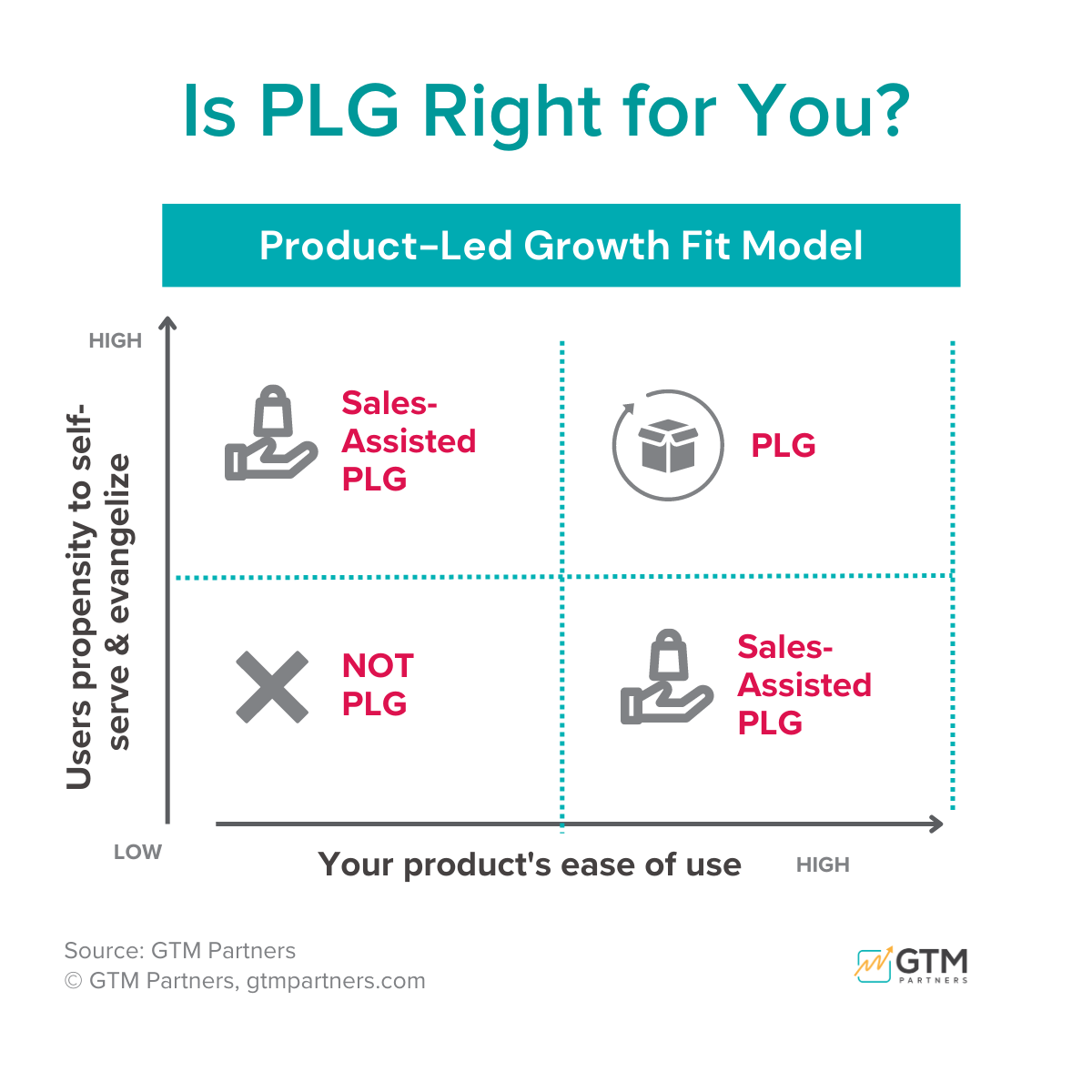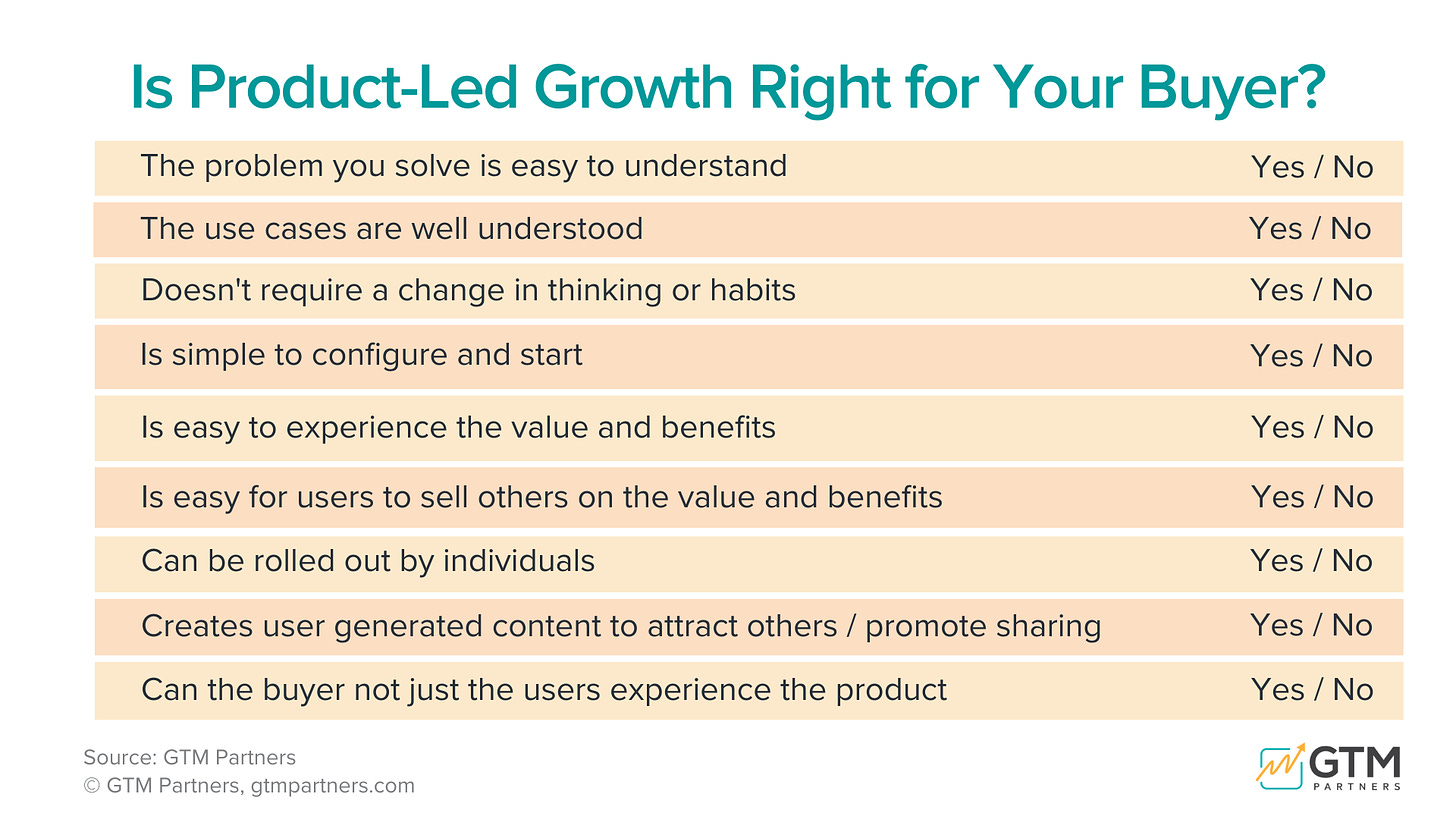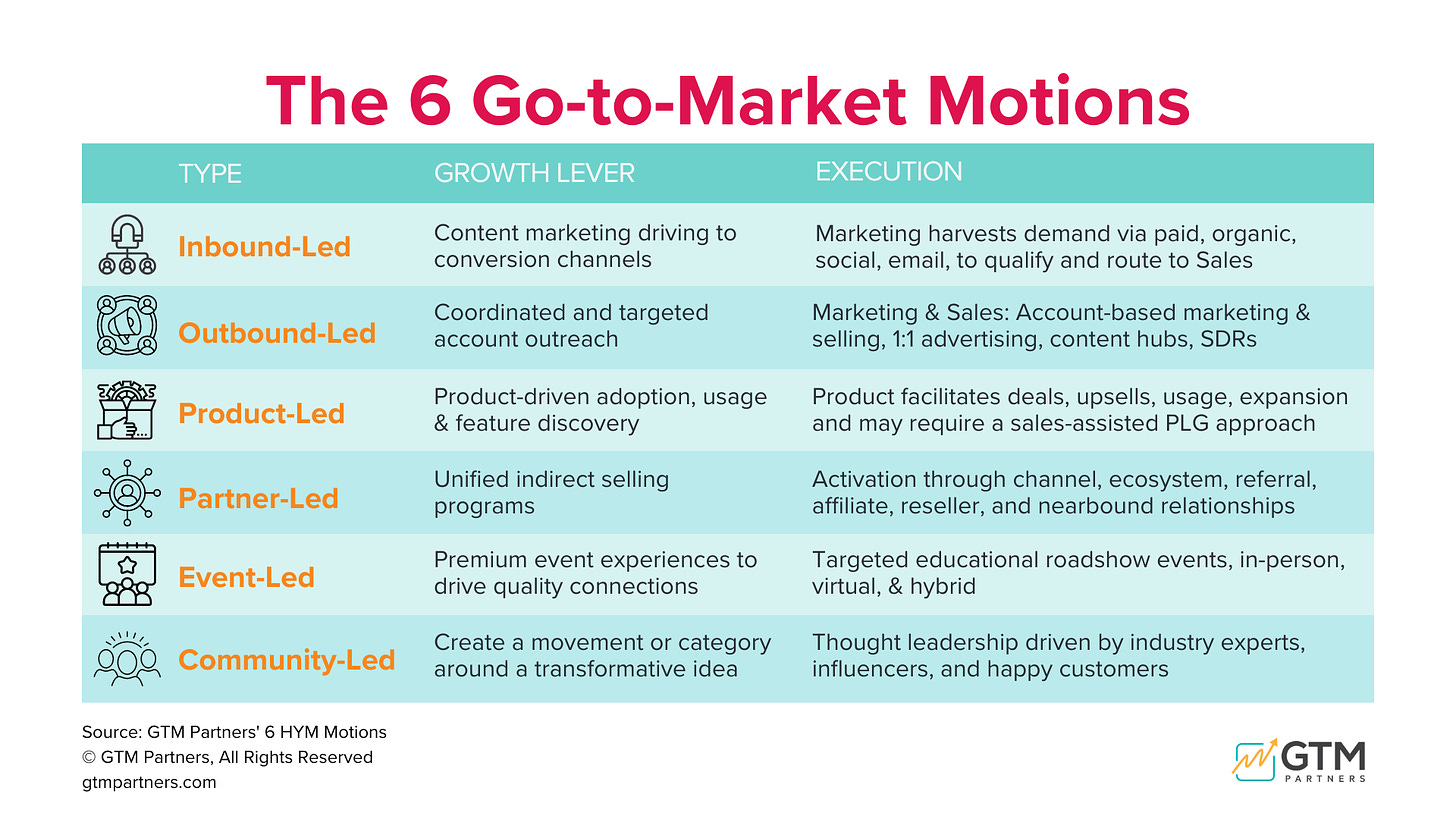Filters
How can you tell if Product-Led Growth is right for you (and your customers?)
Companies of all shapes and sizes are wrestling with this question:
Should we go PLG?
Product-led growth is attractive because, let’s face it, there are many examples of successful companies that were born using the PLG model: Calendly, Zoom, Slack, Dropbox . . . the list goes on.
Learn more about Product-Led Growth as well as Inbound, Outbound, Partner-Led Growth, Community-Led Growth, and Event-Led Growth at our Leadership Summit on August 24 about the role of brand and demand in a GTM Playbook.
More details further on in the newsletter!
If you work on a Go-to-Market team at a technology company, you’ve probably been at a meeting where your CEO, another executive, or your board member asks (sometimes nicely, sometimes not-so-nicely), “Why aren’t WE doing PLG?!” or “I have an idea! Let’s add a PLG-version of our solution!”
However, PLG is certainly not right for all companies or all buyers.
For companies with existing products in the market or in the process of dreaming up new offerings, PLG can be an attractive lure. But how do you know if PLG is the right Go-to-Market approach for your business?
There will be no shortage of opinions but even better is to have a framework to form an objective answer to the question.
How do you know if PLG is right for your business?
We have a framework for determining whether PLG is right for your company.
If your users’ propensity to self-serve and evangelize is high AND your product is very easy to use, you might be a great candidate.
On the other hand, if your users aren’t likely to self-serve and your product is hard to use, it doesn’t make sense.
In the other two-quadrants, we have “sales-assisted PLG,” which can mean lots of things. It could mean an actual sales person is involved, but it could also be a customer success or support professional.
Sometimes the “assist” comes at the front-end to get someone to set up a free account, and sometimes it may come after adoption in the form of enterprise sales. For example : Slack has successfully converted hundreds of users from the same organization to a centralized enterprise purchase from a department head.
Even with a “pure” PLG motion, you have to make an investment in community and support so that product evangelists and experts can interact directly with users (via communities, forums, video, livestreams, LinkedIn, etc.)
Is PLG Right for My Buyer?
Even if you think your product is easy to use and ripe for a PLG motion, it’s worth thinking about the buyers as well.
If you’re answering “no” to many of these questions, it means you’ll experience a lot of friction using PLG.
If you’ve answered “no” to just a few questions, then proceed with caution.
For example if you answered "no" to "the use cases are well understood" but "yes" to "doesn't require change in thinking," you can probably mitigate your challenges. You could create an in-product experience that teaches the use case or allow the user to select templates that make it easy to get started.
Read about all 6 GTM motions here.
Learn about the 6 GTM Motions in our virtual Leadership Summit
The GTM Partners Leadership Summit: The Role of Brand and Demand in a GTM Playbook will provide marketers with research, case studies, and market-tested strategies to enhance branding and generate demand.
It’s on August 24 - all afternoon. Please sign up even if you can’t attend the whole thing, because then you will be on the list to receive all the slides and recordings.
We have an incredible schedule of brilliant speakers, including:
Mark Lethbridge, CEO of Gravity Global will talk with our co-founder and CEO Sangram Vajre in our opening keynote about the tension between brand and demand and how to know if you have a deficit in one or the other.
Christopher Lochhead, the godfather of Category Design, will talk about how to tell when category design is a business imperative and when it’s a distraction.
Jon Miller of Demandbase will share how he has balanced creating and harvesting demand at companies like Demandbase, Engagio, Marketo, and more.
Join Hushly, Pathfactory, and Uberflip for a moderated panel discussion on how content experience platforms can support all the GTM motions through the customer lifecycle.
Learn from exceptional marketers from multiple industries who are having success running different GTM motions. We’ve gotten some experienced geniuses to show you how they use a GTM motion, what their tech stack looks like, and more.
Event-Led Growth: Kate Hammitt of Splash
Outbound: Mason Cosby of Sales Assembly
Inbound: Jon Dick, SVP of Marketing at Hubspot
Community: Kathleen Booth, CMO at Pavilion
Partner-Led Growth: Tyler Calder, CMO at Partnerstack
Product-Led Growth: Darryl Praill of Agorapulse
Senior GTM analyst Lindsay Cordell has can’t-miss sessions about:
How to create a company Point of View (POV)
How to incorporate ROI language into your value propositions
How to determine where to invest in different motions, taking into account product lines, clients, ICP, and % of revenue.
Emerging Technology Report: Out This Week!
Before we go, we can’t resist letting you know - one of our most exciting projects to date is coming this week. Our newsletter next week will be all about it. We’ve highlighted 15 emerging technology companies that could change the way you go-to-market.
The report will be released Wednesday, August 16, but you can reserve your copy now and stay in the know for everything we have related to this exciting research.
Wishing you a happy, healthy late summer. Stay cool out there!
Love,
GTM Partners




